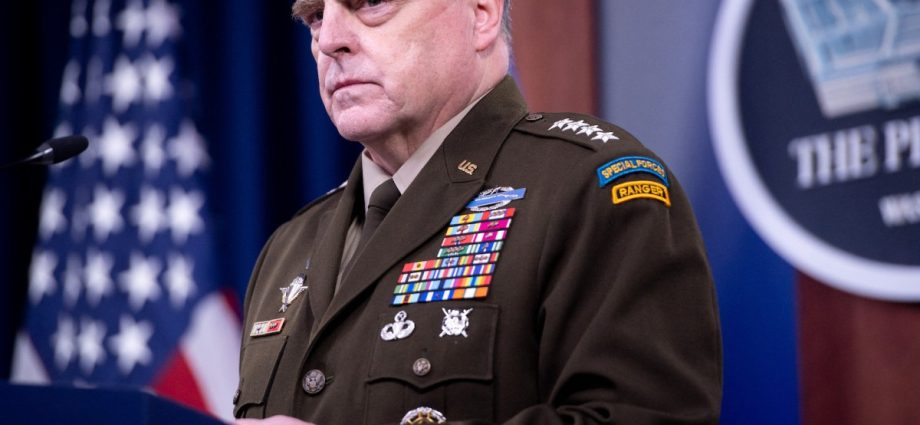This story is about the imminent – early to mid-May – Ukraine conflict escalation that we have forecast over the past six months.
Let me start with a story that’s neither a leak sprung by the Massachusetts Air National Guard nor a White House lie nor the product of the febrile fantasy of a US State Department neocon loony – the principal story sources of the Western press these days.
Visiting Berlin on Tuesday (April 18), Swiss President Alain Berset made it clear to German Chancellor Olaf Scholz – with Swiss precision – that Germany will not be permitted to pass on Swiss-made ammunition for the German Gepard (“Cheetah”) armored air-defense vehicles now used by Ukraine and fitted with 2 Swiss-made Oerlikon 35-mm autocannons. “No one can demand that we break our own [neutrality ]laws,” Berset said.
Well, now! Did Berset just dare throw US neocon and US vassal “rule-based” babble back at Herrn Scholz?
But leave that be.
The Gepard, with two Leopard 1 tank-chassis mounted Oerlikon (now Rheinmetall Air Defense) guns, is an outdated self-propelled anti-aircraft gun system (SPAAG), discontinued in Germany in 2010. But it’s effective against drones and slow-flying cruise missiles – provided it has ammunition – and at massively lower cost than, for example, a Patriot system.
Thirty-seven Gepards are deployed in Ukraine. Each one has a fire rate of 1100 rounds per minute and empties its ammo in 35 seconds. And then what? There’s some Norwegian-made ammo that fits, but there’s not anywhere near enough of it. And that’s the overall Ukrainian and NATO predicament, by way of context for the Massachusetts leaks.
No one aside from the most naively gullible or apologists for demented, mendacious Joe believes that a 21-year old kid PFC could have selected and copied 300 top-classified documents and put them into circulation. My own experience at NATO HQ in the 1980s tells me that. This is utter nonsense. The only serious questions are
- Are the leaked documents for real? and
- If so, who gave them to the kid?
Given what we know otherwise, the documents are real, in my professional judgment. Ukrainian air defense, as noted above, is full of holes. Ukrainian artillery is low on ammunition. Ukrainian casualties, even if not substantially higher than Russian ones, are certainly on a par with the Russians’ – and that, given the 4:1 population difference, is, of course, not sustainable.
So, who leaked, and why?
The documents came from the US Joint Chiefs of Staff level. It’s been pretty well known, ever since late last year when JCS chairman General Mark A Milley told the New York Economics Club that no side could win this war and a negotiated settlement should be sought, that the highest levels of the US military are skeptical of the neocon State Department’s war with a goal of regime change
The objectively ascertainable conditions supporting Milley’s view, never mind the leaks, are more compelling today than late last year.
Where, then, do we stand and where does this go?

If Milley’s assessment is correct, and given that the Ukrainian position is more tenuous than was generally thought in October and November, then a successful Ukrainian southern offensive seriously threatening Crimea is unlikely. In the south, Russia is well dug in and will have considered a final-battle-of Kursk scenario: Sag in the center, then envelop the Ukrainian forces, which – at 80,000, at most – will quickly need to re-form.
There is a proviso: To give the much-ballyhooed southern offensive a chance, Ukraine and its closest allies, the US and UK, would need to take down the Kerch Bridge to cut off Russian mainland access to Crimea. Were that to involve long-range NATO artillery, a Russian red line might well be crossed.
For several reasons, Ukraine may choose instead to launch a central front offensive from the region north of Bakhmut and east of Kramatorsk in the direction of Lysychansk and Luhansk. Wagner Group head Prigozhin has warned of that and may well have the right instinct about it. Russian forces north of the Donbass salient would be cut off and would either have to flee to the homeland or surrender.
For several reasons, Ukraine may choose instead to launch a central front offensive from the region north of Bakhmut and east of Kramatorsk in the direction of Lysychansk and Luhansk. Wagner Group head Prigozhin has warned of that and may well have the right instinct about it. Russian forces north of the Donbass salient would be cut off and would either have to flee to the homeland or surrender.
It would not be the recovery of Crimea touted by Zelensky and State’s Victoria Nuland, but it would probably keep Western support for Ukraine alive.
Unless hardnosed military advice to the White House has some effect, we are entering into the most dangerous phase not just of this war, but of any period since November 1983, when a nuclear war almost started because the Russians interpreted NATO’s too-realistic exercise Operation Able Archer as a ruse to disguise a nuclear first strike. The lunatic ideologues at the US Department of State, who demand regime change and the break-up of Russia, will see to that.

